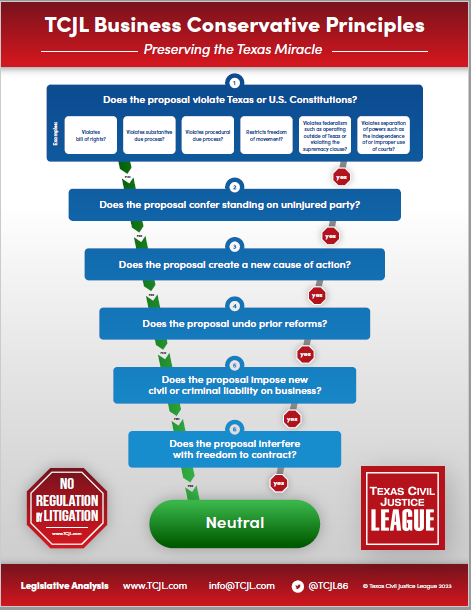 Joining a long list of federal courts and courts in other states, the Dallas Court of Appeals has held that the COVID-19 virus did not cause a “direct physical loss of or damage to” property, affirming a trial court’s summary judgment order in favor of the insurer.
Joining a long list of federal courts and courts in other states, the Dallas Court of Appeals has held that the COVID-19 virus did not cause a “direct physical loss of or damage to” property, affirming a trial court’s summary judgment order in favor of the insurer.
Julio & Sons Company, et al. v. Continental Casualty Company (No. 05-23-00116-CV; July 3, 2024) arose from a restaurant group’s losses sustained during the COVID-19 pandemic. UJB, a holding company for a dozen Texas restaurants, purchased a property and casualty policy from Continental covering “risks of direct physical loss of or damage to” real or personal property, as well as “time element” losses for business interruption, losses from orders of a “civil authority,” and additional expenses. The policy contained no exclusion for viruses. When the pandemic broke out, UJB was forced to curtail or cease operations at its restaurants, some of which were permanently closed. UJB filed a claim with Continental for business interruption, denial of access by a civil authority, ingress-egress, contingent business interruption, extra expense, leasehold interest, expenses related to reducing loss, extended period of indemnity, loss adjustment expense, and professional fees. Continental denied coverage based on the policy’s language requiring a “direct physical loss of or damage to property.” UJB filed suit, seeking declaratory relief and alleging breach of contract, breach of implied covenant of good faith and fair dealing, and Texas Insurance Code violations. After discovery, Continental moved for summary judgment. The trial court granted the motion and dismissed all of UJB’s claims. UJB appealed.
In an opinion by Justice Nowell, the court of appeals affirmed. UJB argued that because COVID-19 was present in its restaurants at the time operations were interrupted, it necessarily caused “direct physical loss of or damage to property.” For purposes of its analysis, the court assumed that the virus was present in the restaurant. Well-settled Texas law interprets “direct physical loss or damage” to require a physical or tangible alteration to property. Observing that neither SCOTX nor another intermediate court of appeals has addressed the issue, the court turned to decisions by the U.S. Fifth Circuit Court of Appeals, Texas federal district courts, and numerous courts from other states. These courts have unanimously concluded that, “as a matter of law, business income losses resulting from the COVID-19 pandemic are not covered under property insurance policies requiring a direct physical loss of or damage to property (citations omitted). Many of these courts took the position that although the virus “poses a risk to individuals, [] it is ultimately a transitory virus that poses no long-term risk to inanimate property” (citations omitted).
UJB argued that COVID-19 molecules physically altered the tables, chairs, and countertops in its restaurants. It presented testimony from a biochemist that “the combination of virus-plus-surface creates a new substance, called a fomite, that is infectious and dangerous.” These “fomites,” however, “can be deactivated and removed with manual cleaning and disinfecting and they deactivate on their own over time. Thus, the transmission risk from a single touch of a surface is ‘generally low.’” Moreover, with respect to viruses adhering to surfaces, they all do that, up to and including the common cold. As the court pointed out, “property everywhere would be in a constant state of damage or loss” simply by virtue of coming into contact with a virus-carrying human (i.e., everybody all the time). Additionally, there was no evidence that the mere circulation of the virus in the air produced any physical alteration of change to the restaurant’s property. Indeed, the court observed, when the restaurants reopened, they used exactly the same property in the same condition as they did before the pandemic. This case was thus distinguishable from cases that have held, for example, that airborne substances such as smoke toxic gases released from Chinese drywall, since property had to be removed or replaced to remedy the problem.
This case had some other interesting evidence worth noting. In discovery, for example, the insurer got hold of UJB emails suggesting that the COVID-19 crisis could be used as leverage to renegotiate leases and reduce losses in the face of already declining sales. The evidence also established that UJB closed restaurants to comply with government orders and to protect worker and patron safety, not because the virus caused physical loss. The court further rejected UJB’s contention that the orders of civil authorities caused direct physical loss or damage, those orders were not the “direct result of physical loss of or damage to property occurring ‘at or in the immediate vicinity’ of any of its restaurants” (e.g., on account of civil disorder or a natural disaster). UJB’s “ingress-egress’ argument likewise failed because at no time were the restaurants’ employees prevented from entering the premises, which were used for to-go ordering while they were closed to in-person dining. Finally, all of UJB’s derivative claims failed because there was no coverage to begin with.
At least one other intermediate court of appeals case is currently pending on similar claims: Lloyd’s Syndicate 1967 Subscribing to Pol’y B0180PG1922227 et al. v. Baylor College of Medicine (No. 14-22-00925-CV). That case was submitted in December with no oral argument. We’ll keep an eye out for it, but it seems likely that the Houston [14th] Court of Appeals will follow the overwhelming weight of authority finding no coverage.












